Blue is said to be the most popular “favorite color,” and that makes sense. We live in a world covered by a blue dome of sky, and surrounded by a powerful blue ocean. Planet Earth is nicknamed, The Blue Planet. It can be a calm and relaxing color, or moody and brooding. It can be uplifting and soothing, or sad and depressing.
In bath products, I tend to find blue to be the easiest and most forgiving of colors. It’s much less prone to staining than the reds, and gives you a powerful color payout.
It also has that added allure of making any bath look beautiful. While some people might find a tub of yellow water troublesome, and others would be shocked by a red bath, there’s no doubt that a bathtub full of blue water has universal appeal.
If there is one drawback to using blue in bath products, it might be its one-note personality. Afterall, blue is achieved with Blue 1. There’s no mystery, is there? But how do you get tonality with blue? Do you keep adding heaps of Blue 1? No, that wouldn’t work. Eventually you’ll reach maximum saturation and you’d still just have basic blue.
If we want to unlock a full range of blue bath bombs we have a few options. We could use pre-blended lakes and dyes, or, and this is my favorite solution, we could mix it up ourselves.
Montagues and Capulets
The color studies are intended as a way for you to learn to mix your own colors. If you haven’t read any of the previous color studies, (or even if you have, but need a refresher) there is one key principle to keep in mind: Color Families!
The basic colors I work with and suggest that others use are:
BLUE 1, YELLOW 5, RED 27/28
and
RED 40, YELLOW 6
I generally break them into two groups the way they are shown above. You can think of these two families as Montagues and Capulets. Jets and Sharks. Tesla and Edison. When they stay in their lane things are great, but when you try to bring them together things get real dark, real quick. However, all of these colors are used in the pre-made Lake blends you can purchase from suppliers, so it’s worth investing in a full set of the individual Lakes and learning how to properly mix them yourself!
For this experiment I created different Blues by using Lakes. I love Lakes because they are easy to work with and they don’t fade as easily as Dyes. Lakes do require the use of Polysorbate 80 in bath bombs, so make sure you’re including this important ingredient!
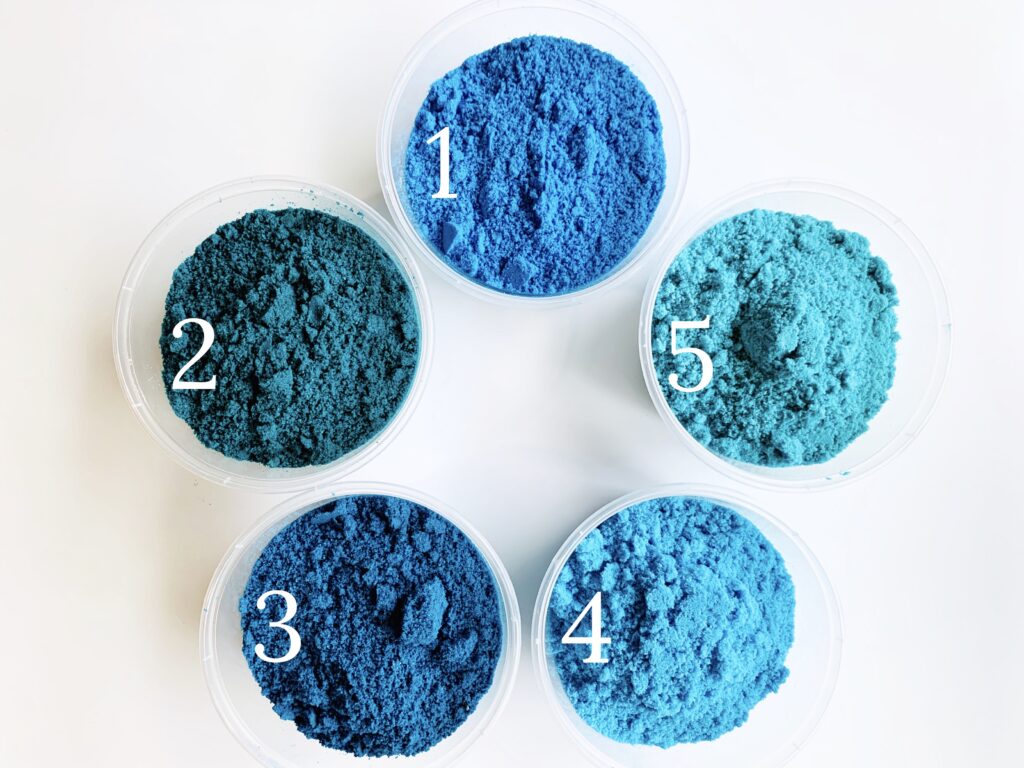
<<<Each container has 250 grams of Bath Bomb mix for each color blend tested.>>>
BLUE BATH BOMB MIX 1
This is just your everyday basic blue.
- Blue 1
- Actual amount- ½ tsp
BLUE BATH BOMB MIX 2
This fantastic teal color uses a heavy saturation of Blue 1 and 2 microscoops of Yellow 5
- Blue 1: Yellow 5
- Actual amount- ½ tsp Blue 1: 2 Microscoops Yellow 5
BLUE BATH BOMB MIX 3
The same amount of Lake colorants as Mix 2, but this this time using Yellow 6 to create a darker blue.
- Blue 1: Yellow 6
- Actual amount- ½ tsp Blue 1: 2 Microscoops Yellow 6
BLUE BATH BOMB MIX 4
You can control how saturated your mix is by using less colorant! Compare this mix to Mix 1 and you’ll see what I mean!
- Blue 1
- Actual amount- ¼ tsp Blue 1
BLUE BATH BOMB MIX 5
Once again playing with the amount of colorant added, this blue is a variation of Mix 2
- Blue 1: Yellow 6
- Actual amount- ⅛ tsp Blue 1: 1 Microscoop Yellow 5
Depending on your supplier, you might need to tweak the amount of color you add to your mix, but this study should be a great place to start! Remember that if you add too much yellow your mix will begin to look green, so start with small amounts first and work up until you get a color you like. Take plenty of notes so you can always recreate your favorite custom blends! Happy Making!
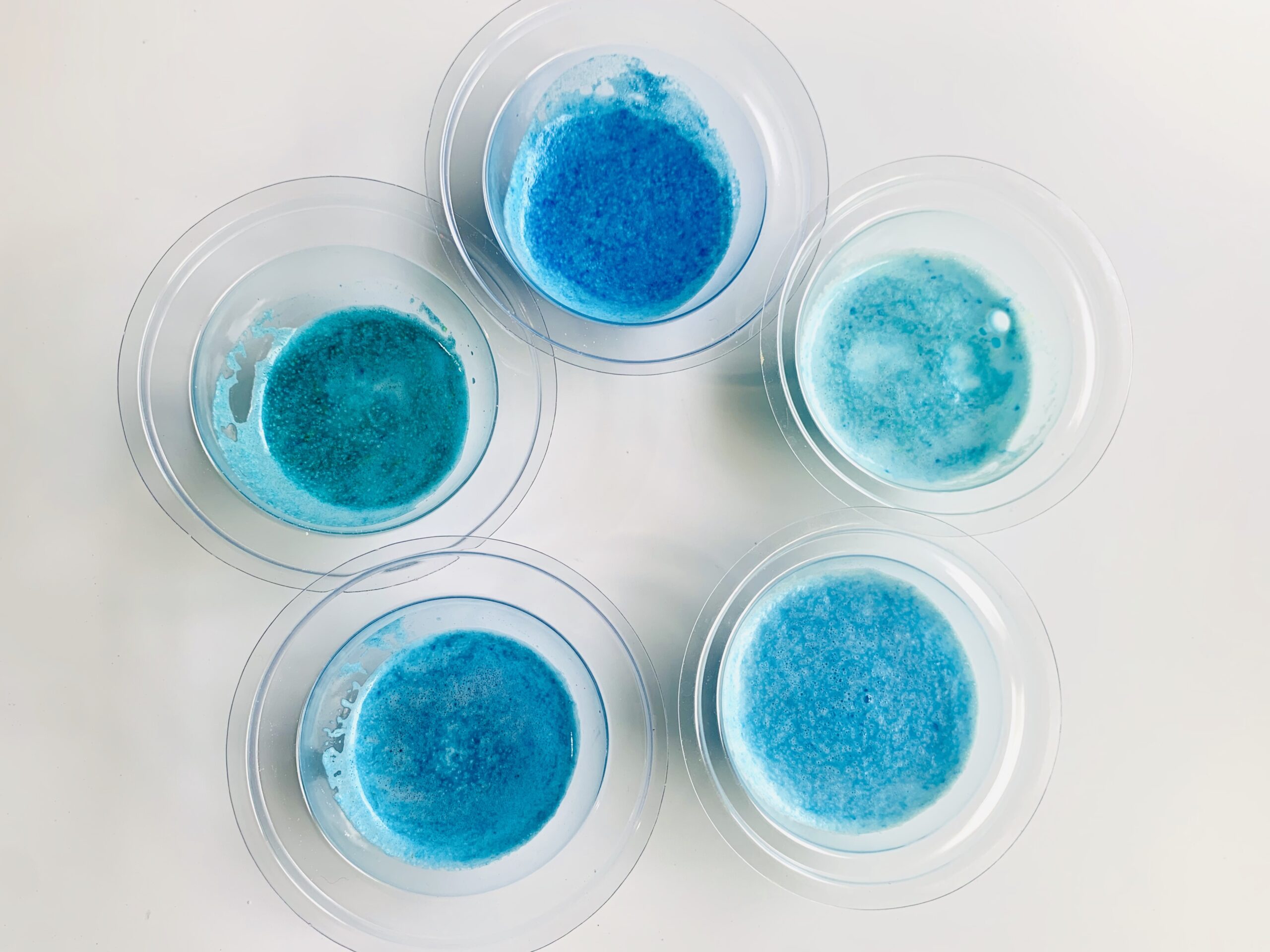
BONUS
After this article was written there was a request for the deepest, darkest blue we could create. There’s a fine line here between achieving midnight blue and simply an inky black, but I think this bonus color still qualifies as blue although it is very dark! If you wanted to go even darker you could slowly add microscoops of Red 40! Remember to give plenty of time for the colors to mix before adding more Lake! You can always add more, but you can’t take it away once it’s added!
BONUS BLUE BATH BOMB MIX
Well well well. Hello Darkness.
- Blue 1: Yellow 6
- Actual amount- ½ tsp Blue 1: ½ tsp Yellow 6
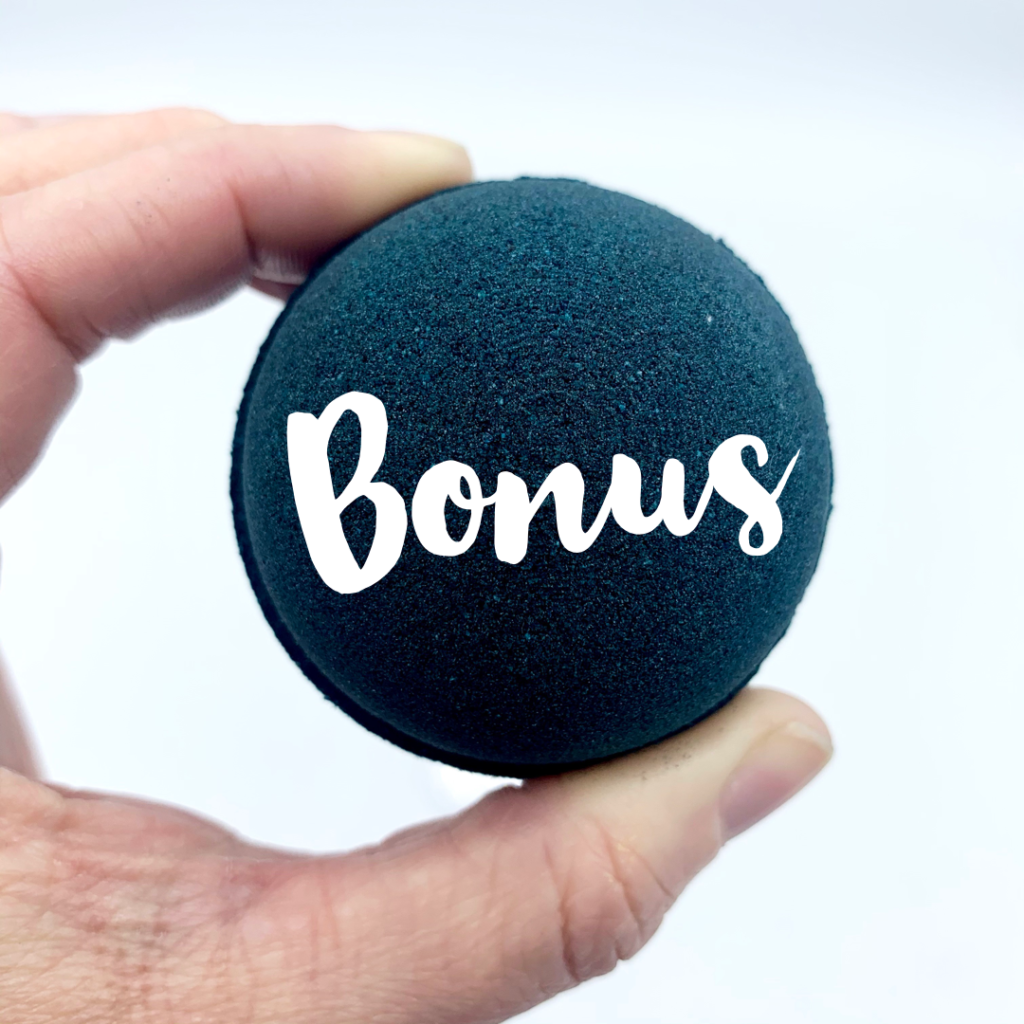
Do you want to learn more about colorants in bath bombs and bubble bars? Our Bubble Bootcamp: Color Masterclass is full of hands on instruction to take your bath bombs to the next level!
You can also join our community of makers on Facebook! Whether you’re a beginner or a pro you’ll love our supportive, helpful group!
About Robyn French Smith
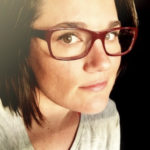
My name is Robyn French Smith! I studied fine art at the University of St Thomas and the Glassell School of Art in Houston TX, and graphic design at The Art Institute of Houston. I started dabbling in DIY bath and body products over 10 years ago after moving to Alaska. While I knew how to make basic soap for several years, I didn’t start looking at it as an art form until about 4 years ago when a neck and shoulder injury made it almost impossible for me to draw and paint. I needed a place for all that creativity to go, and I found it in soap. I received my Basic Soapmaker Certification from the HSCG in 2019 and plan on pursuing further levels of certification.
Find me online at scandaloussoap.com and Facebook!
Please share on Pinterest! Thank you!

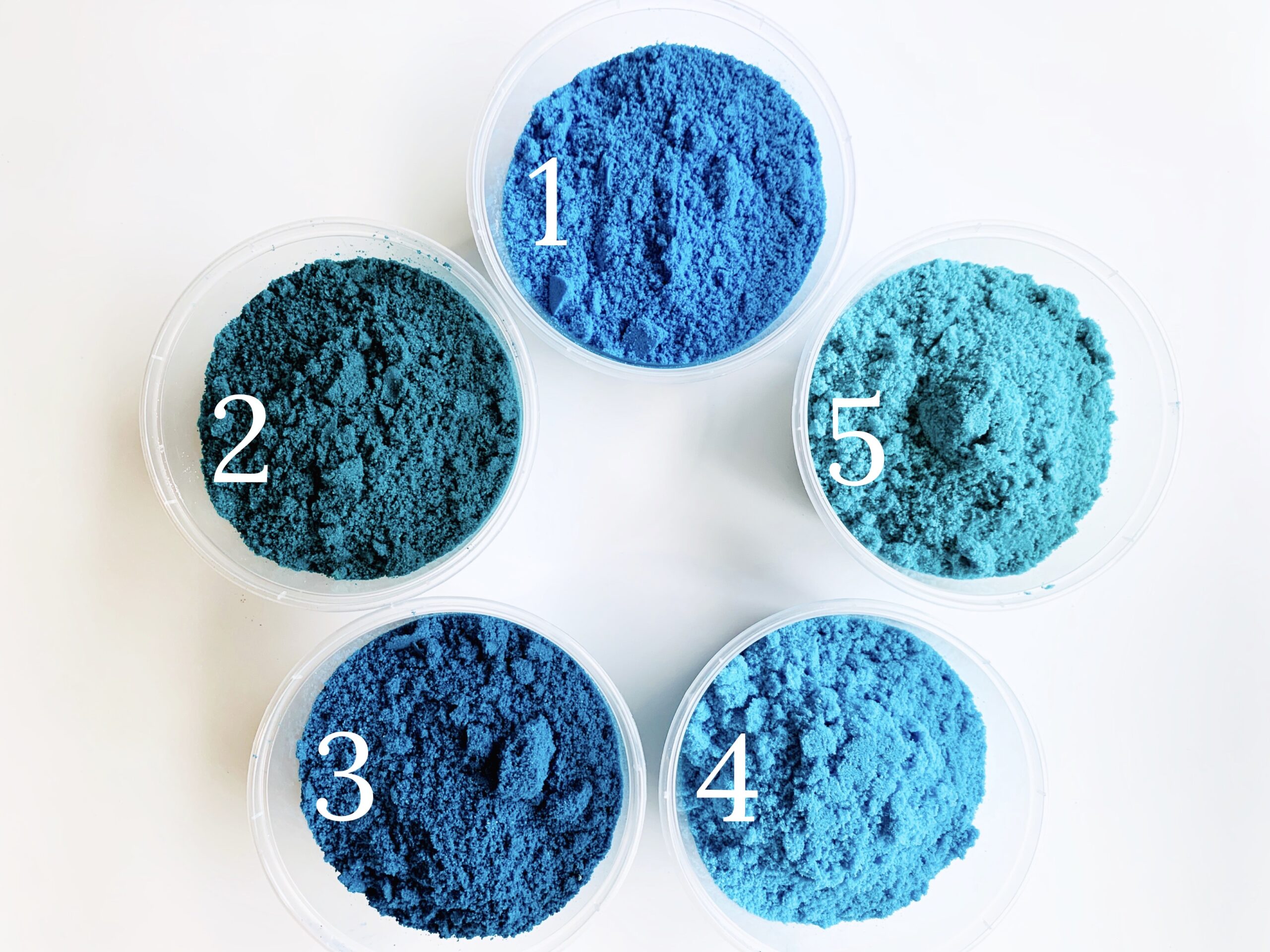
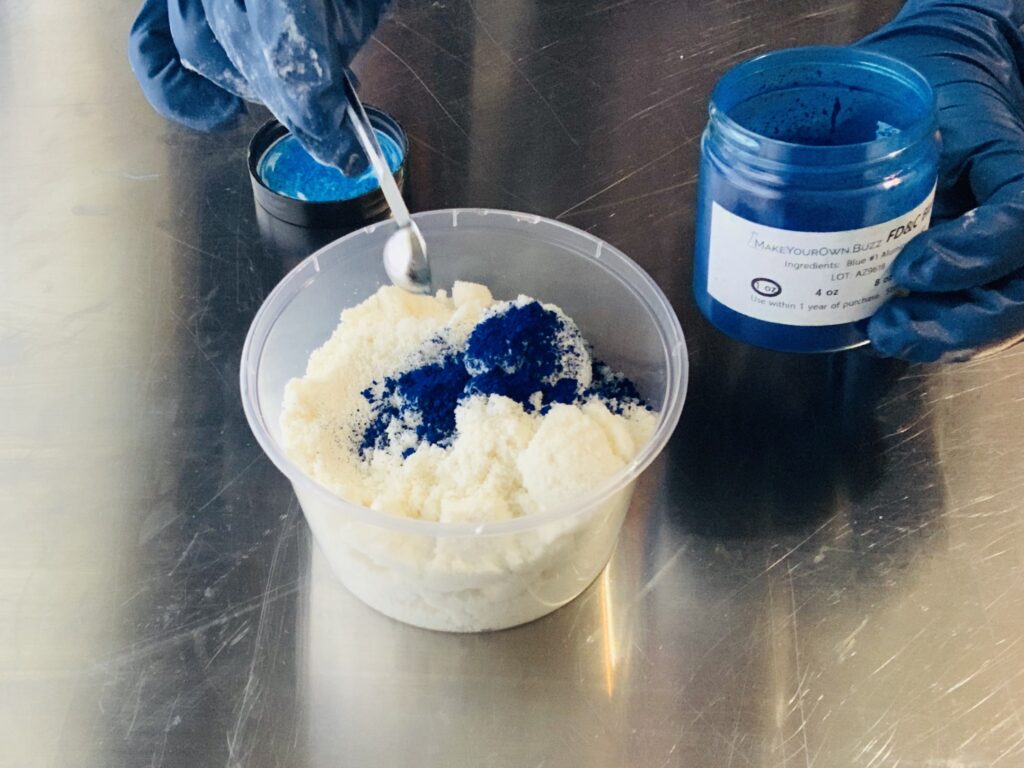
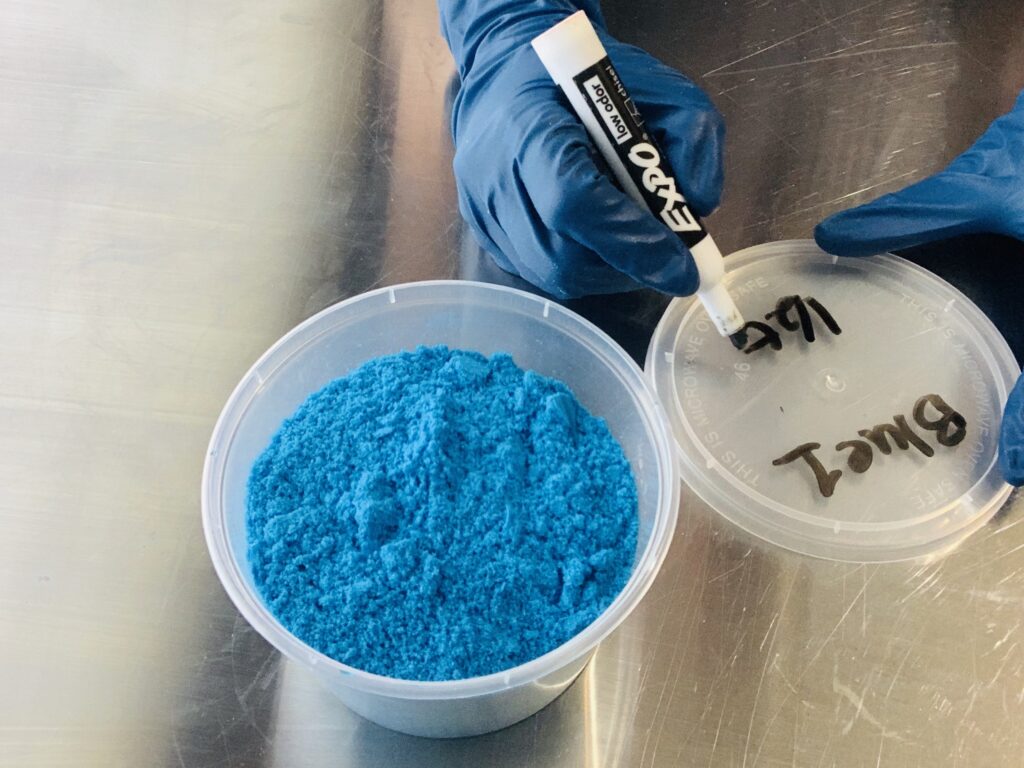
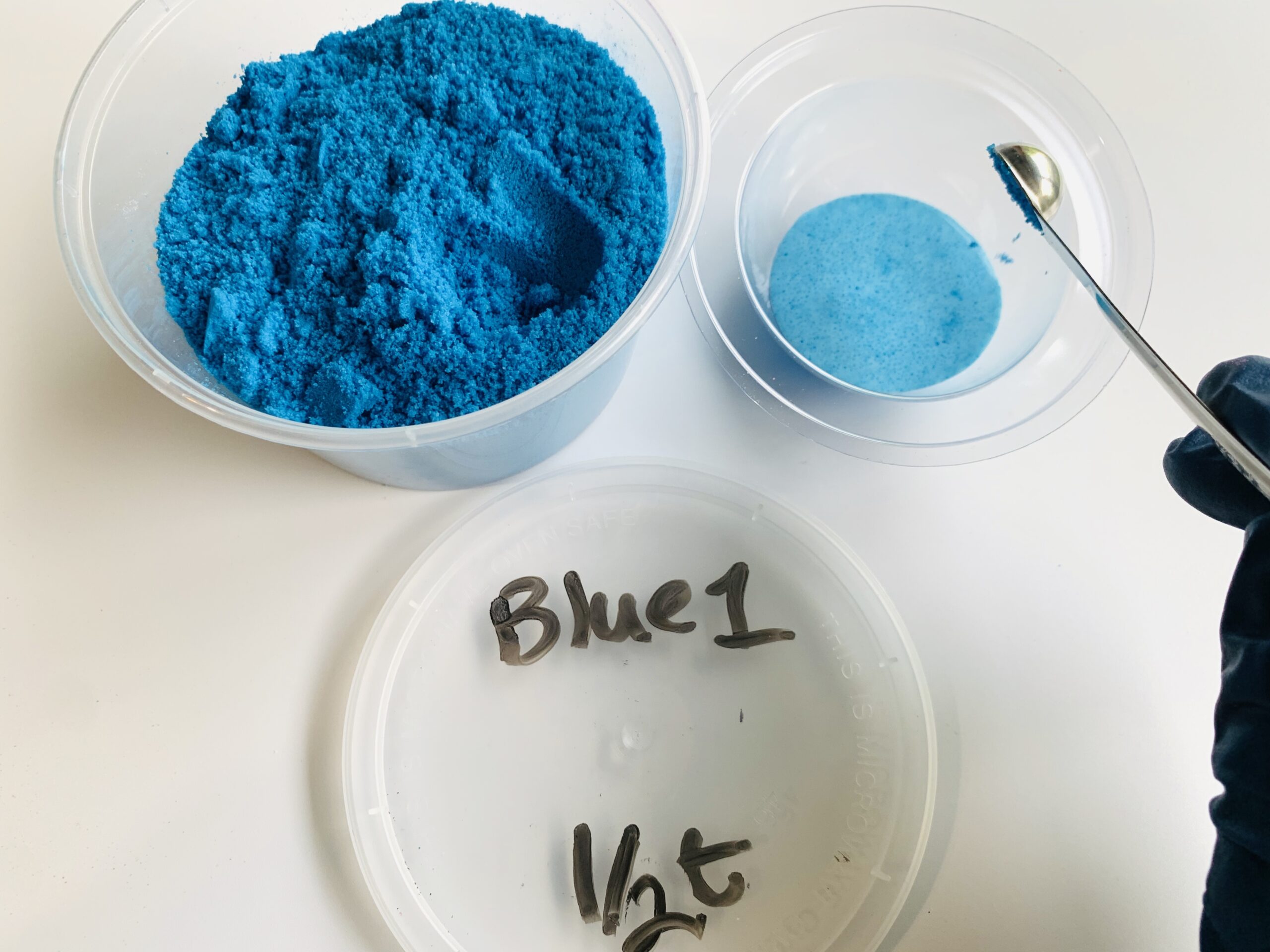
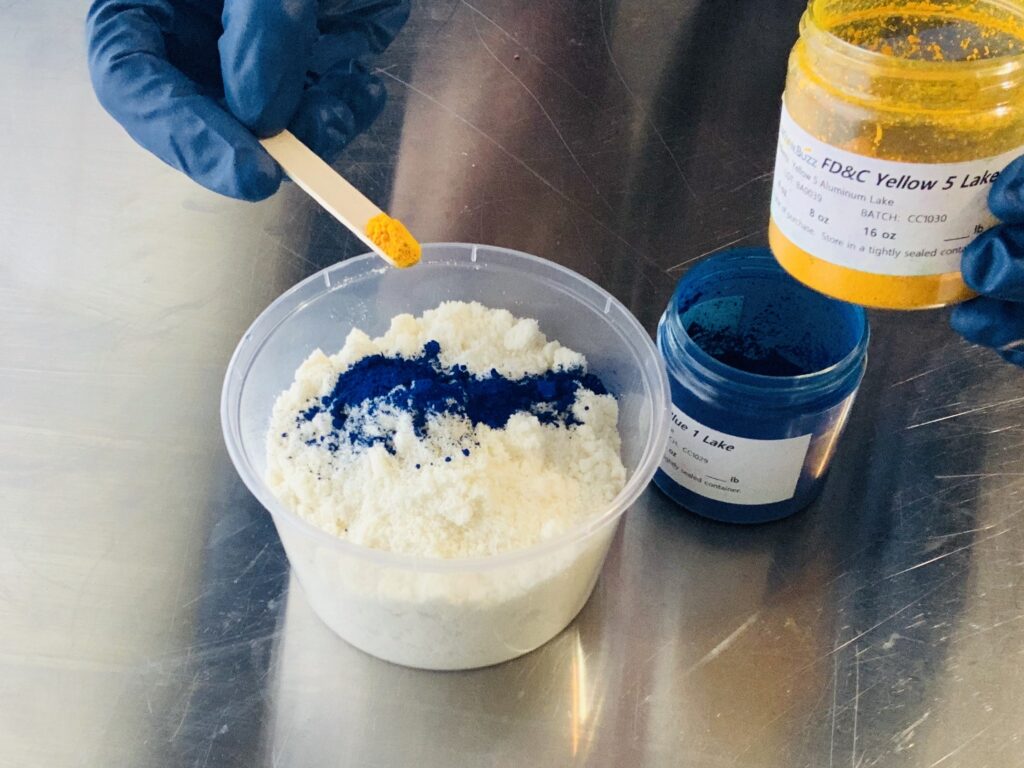
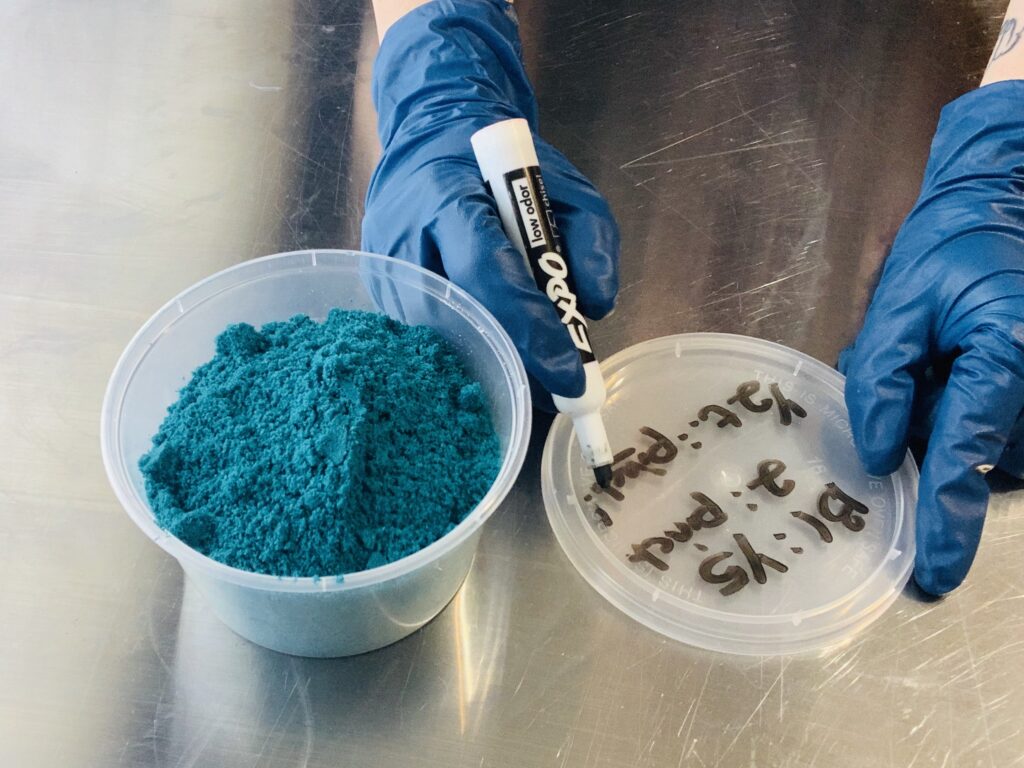
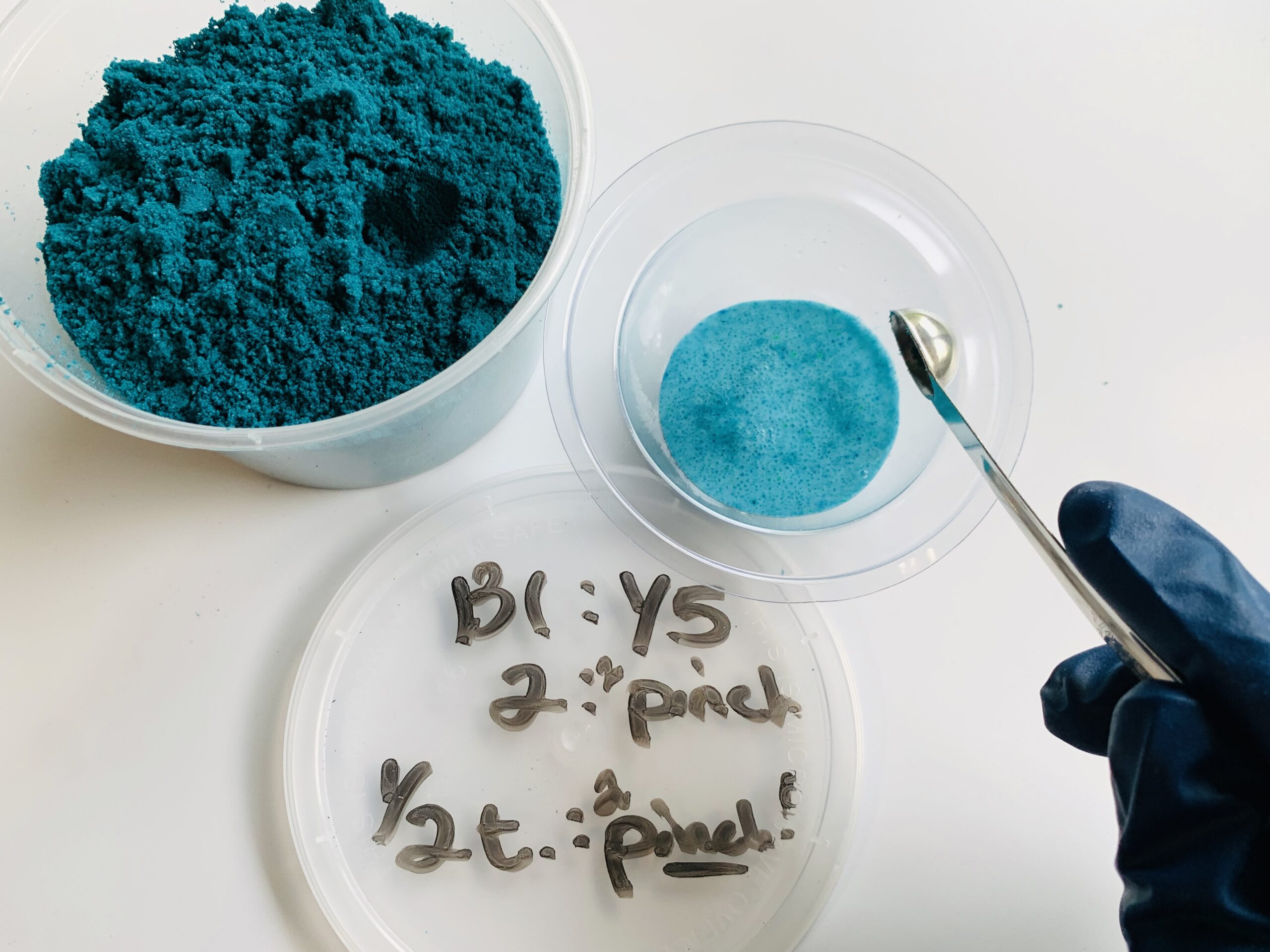

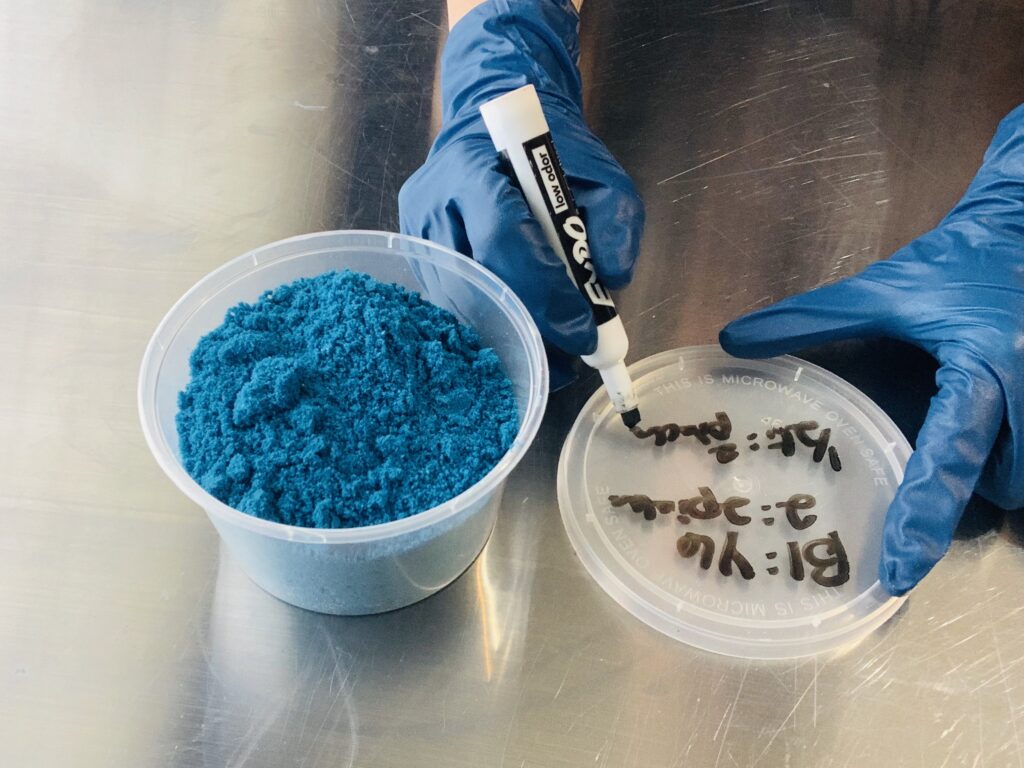

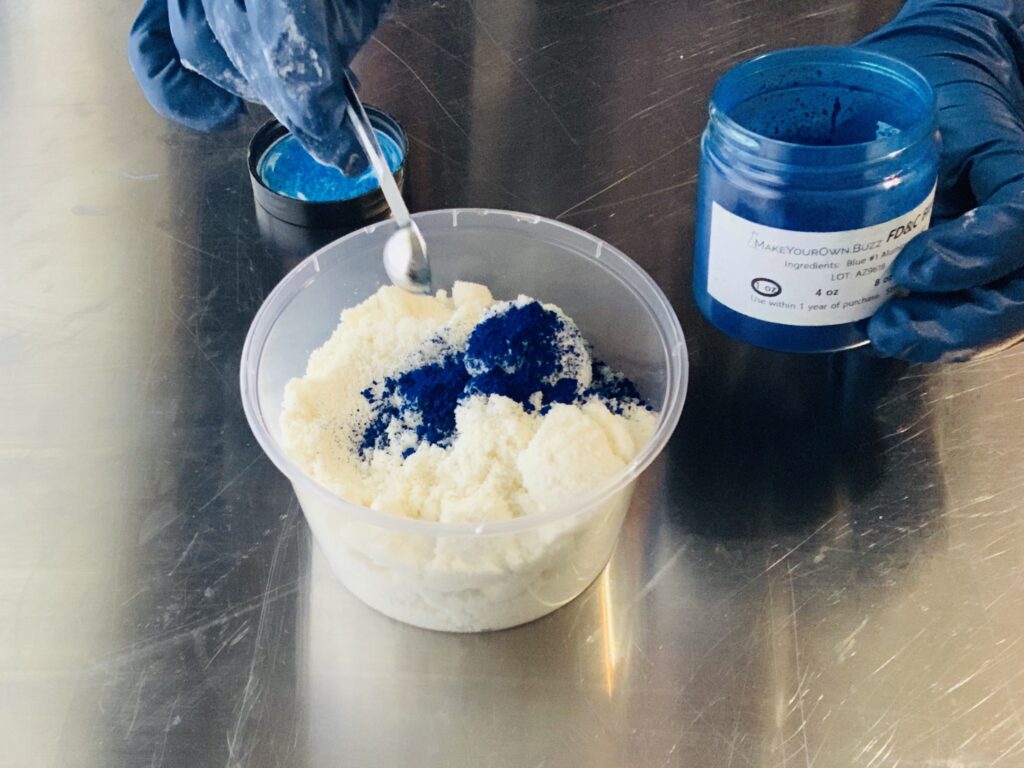
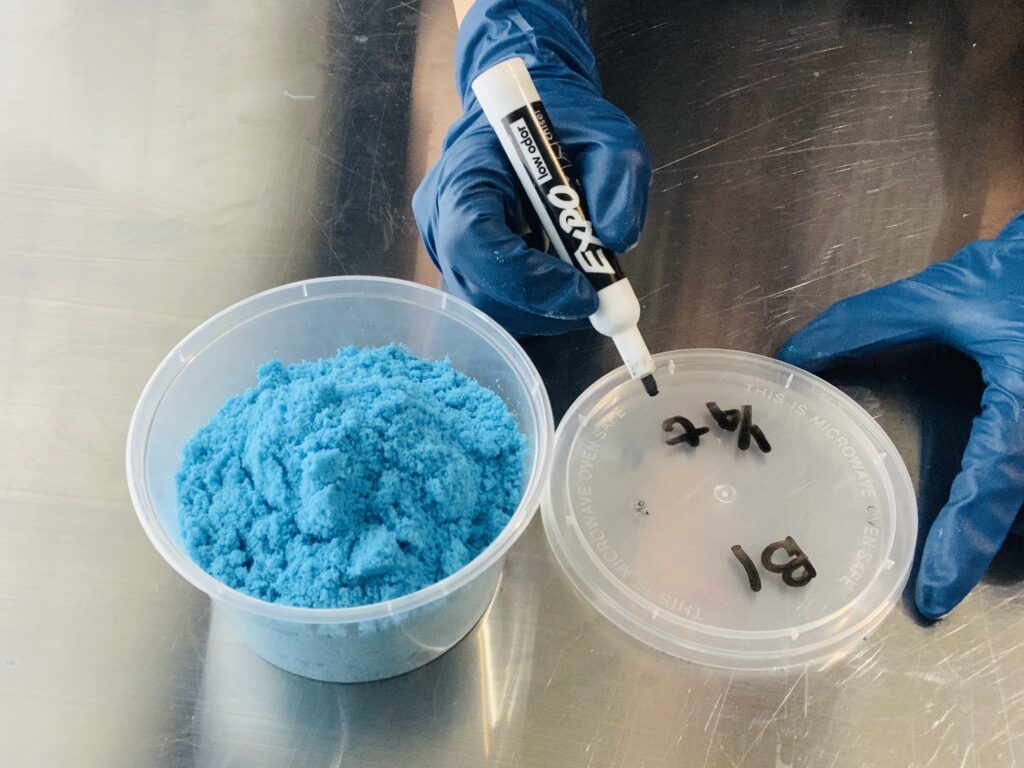
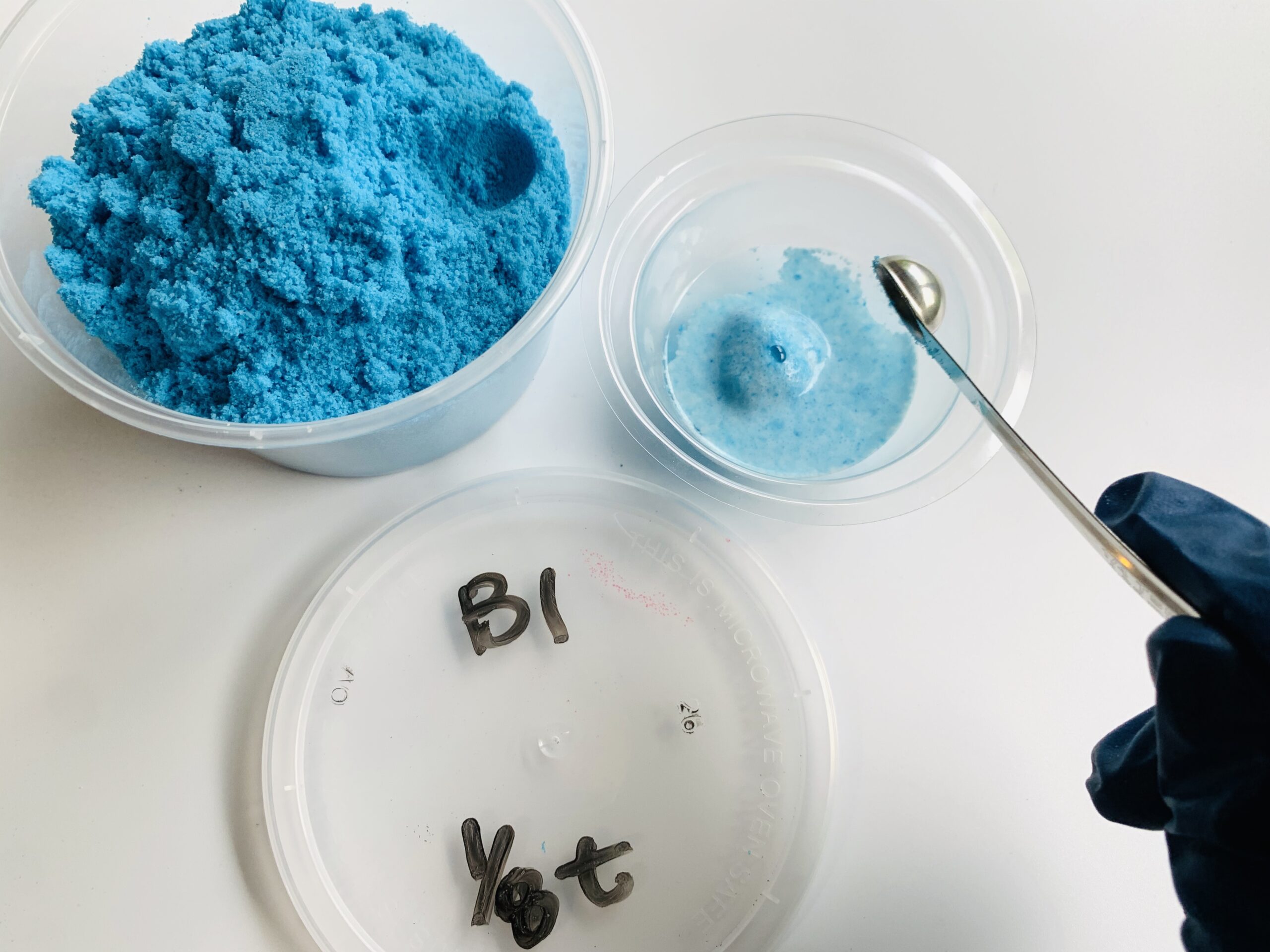
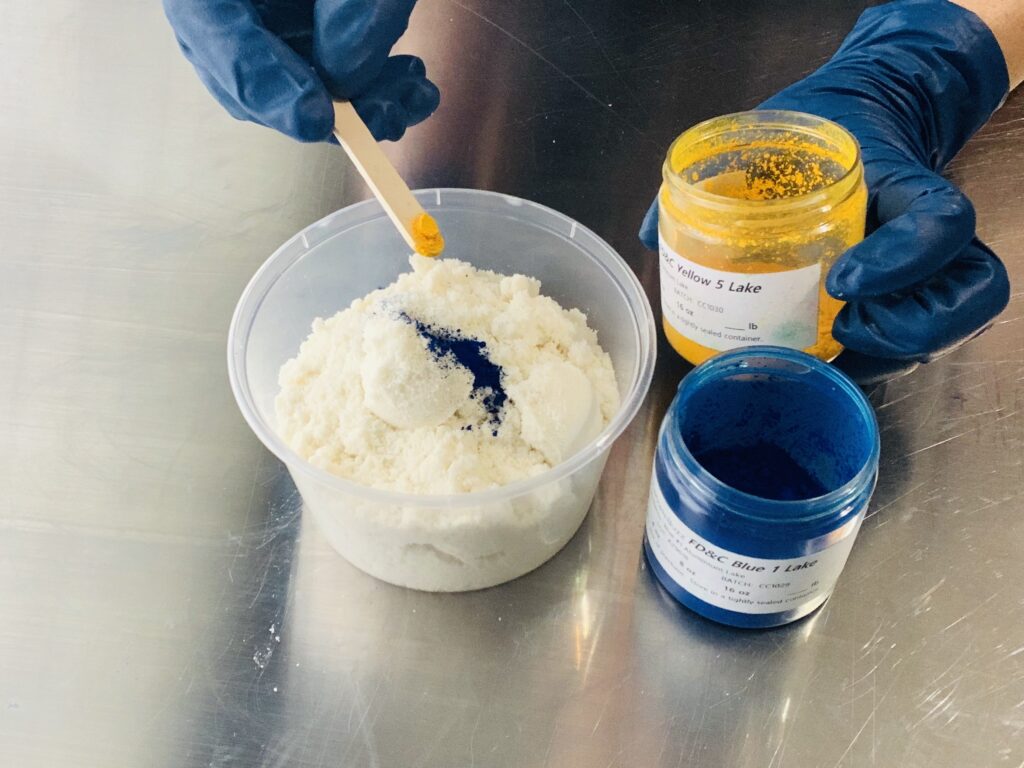
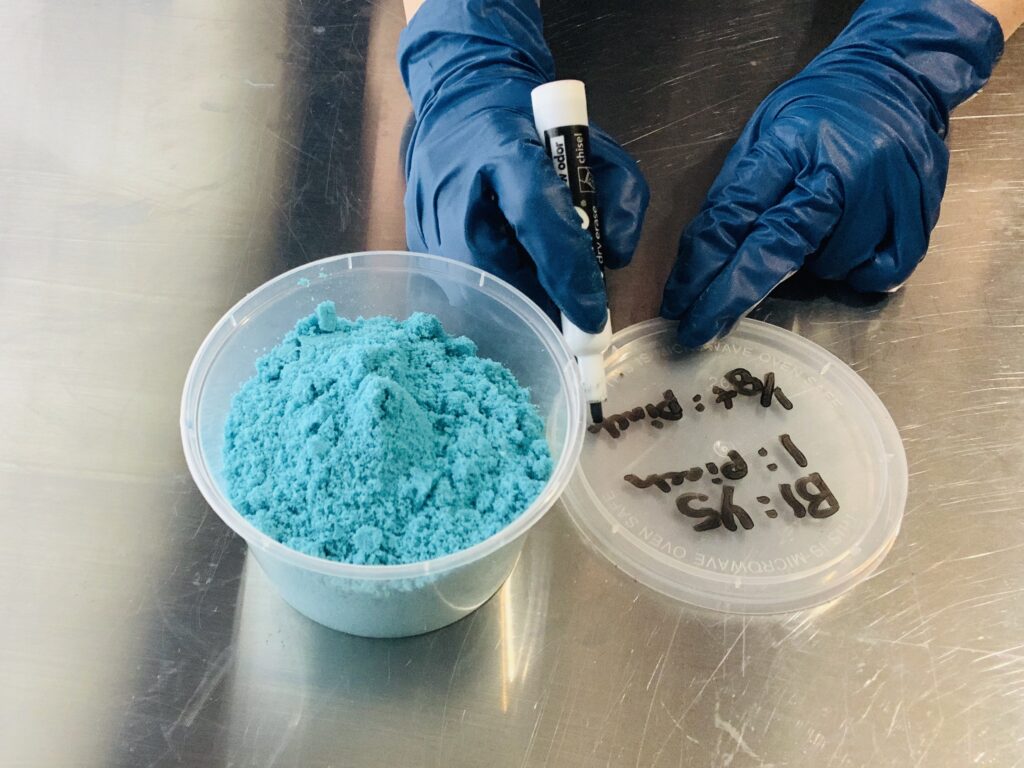
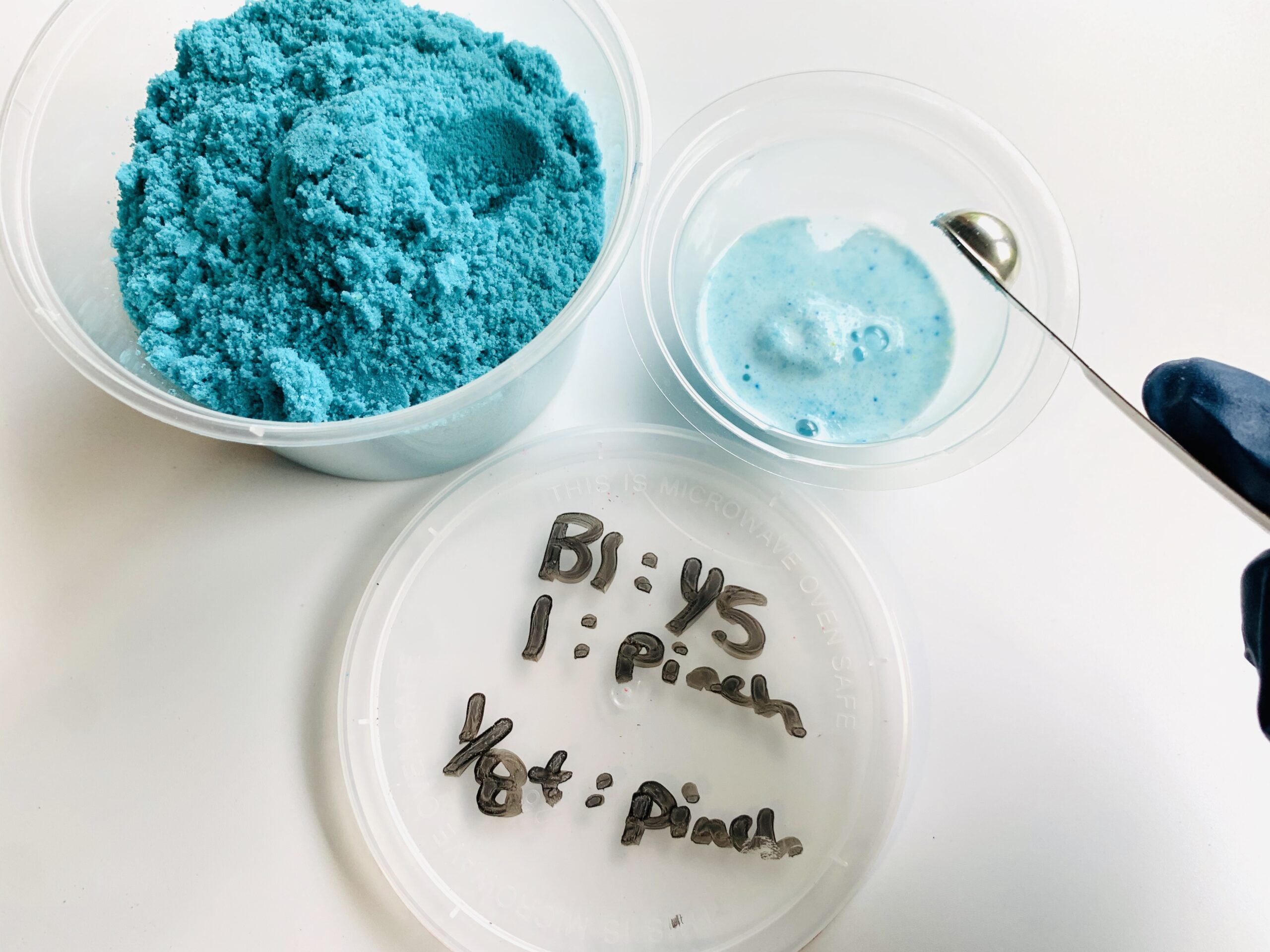
On Mix 5 blue do you yellow 5 or 6? They are both listed.
How much is a microscoop or where can I find one?
A microscoop is approximately .15 grams… however I wouldn’t use that as a hard and fast rule since I didn’t use *actual* microscoops and simply used the tip of a craft stick. The main point is that it should be added as in TINY amounts at a time until you see how the color develops! Hope that helps!
amazon has these
Thank you so much for this. It really helps to explain re blending different colours. I’m newish to making bath bombs ( not a seller; friends & family only) as due to injuries and health probs cannot continue previous work. I was looking to make a darker blue earlier , before I saw this – & combined blue, violet & a scoop of purple. First time I’d blended anything. Not bad – but I wish I’d seen this first! I have your humid bath bomb recipe, will be trying that out in the next couple of days. Thank you so much for sharing your knowledge. It is very much appreciated & I’m looking forward to trying your recipe in our nasty wet humid U.K. weather! Just wanted to say thank you for sharing your knowledge . It’s much appreciated.
Thanks so much for your comment! We love knowing that we’ve been able to help other makers be successful! Hopefully our humid weather recipe works for you as well! Happy making!
Oh Robyn, it worked beautifully. Used round plastic ball moulds, stainless steel ball moulds and the plastic “shape” moulds ( not sure of their proper name, starfish, cloud etc moulds) just to see how it worked in different types of mould.
Perfectly – is the answer in all the different types! Thank you so much for sharing your knowledge.
Do you have ratios for your blues? I don’t have micro scoops and I measure my colors by weight. It would be very helpful. Thank you!!